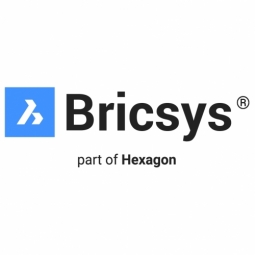Technology Category
- Application Infrastructure & Middleware - Middleware, SDKs & Libraries
Applicable Industries
- Cement
Applicable Functions
- Product Research & Development
Use Cases
- Virtual Prototyping & Product Testing
About The Customer
SLIK Architekten GmbH is a medium-sized architectural firm located in Zurich, Switzerland. The firm boasts a strong portfolio of cutting-edge building and urban design projects. One of the founding partners, Steffen Lemmerzahl, emphasizes the growing importance of 3D modeling in the architectural space. The firm's design plans are sent for approval to landlords, authorities, and construction builders. Since its founding, SLIK Architekten has been using 3D models to develop their designs. The firm's workflow requires them to have constant access to their work and to be in control of decisions regarding software updates.
The Challenge
SLIK Architekten, a medium-sized architectural firm based in Zurich, Switzerland, was facing challenges with their previous CAD software developed by Autodesk®. The firm's workflow required them to have constant access to their work, regardless of location, and to have control over decisions regarding software updates. However, recent changes to Autodesk’s licensing model did not align with SLIK Architekten's operational needs. The firm could not risk losing access to their main body of work due to changes made by the software company. Additionally, they needed a software that could seamlessly integrate with their existing ecosystem of different software packages.
The Solution
SLIK Architekten found their solution in BricsCAD®, a software that offered them the flexibility and reliability they needed. The firm uses BricsCAD® and BricsCAD® BIM permanent network licenses to create architectural drawings quickly and efficiently. The transition from AutoCAD® to BricsCAD was straightforward, with a small team handling the preparations regarding their libraries and templates. BricsCAD was deployed parallel to AutoCAD® LT to ensure a fallback option was available if needed. The migration was smooth and required little external support, with the team relying on manuals and forum wisdom. The firm now uses BricsCAD as their main tool for creating architectural drawings and 3D models.
Operational Impact

Case Study missing?
Start adding your own!
Register with your work email and create a new case study profile for your business.
Related Case Studies.

Case Study
System 800xA at Indian Cement Plants
Chettinad Cement recognized that further efficiencies could be achieved in its cement manufacturing process. It looked to investing in comprehensive operational and control technologies to manage and derive productivity and energy efficiency gains from the assets on Line 2, their second plant in India.

Case Study
Digital Transformation of Atlanta Grout & Tile: An IoT Case Study
Atlanta Grout & Tile, a Tile, Stone & Grout restoration company based in Woodstock, Georgia, was facing challenges with its traditional business model. Despite steady growth over the years, the company was falling behind the web revolution and missing out on the opportunity to tap into a new consumer base. They were using independent software from different vendors for each of their department information and workforce management. This resulted in a lot of manual work on excel and the need to export/import data between different systems. This not only increased overhead costs but also slowed down their response to clients. The company also had to prepare numerous reports manually and lacked access to customer trends for effective business decision-making.

Case Study
Revolutionizing Construction Equipment Rental: A Case Study on ProsRent and ENO8
ProsRent, a startup that won the 'Best Financial Opportunity' and 'Best Pitch' at CodeLaunch 2016, aimed to revolutionize the way construction professionals source and rent heavy equipment. In the construction industry, project managers and contractors typically rent heavy equipment from supply companies. However, predicting inventory can be challenging, and finding the required equipment at the right time and place can be a hassle. If the preferred vendor doesn't have the required equipment, it results in wasted time and money in searching for it, often leading to higher costs due to non-preferred rates and increased delivery costs if the vendor is located far from the job site. Suppliers, on the other hand, desired access to a wider base of trusted renters that they didn't have to vet themselves and wanted to offer dynamic rental pricing based on demand and availability in their market. ProsRent's challenge was to produce a minimum viable product that was fast and first to market but also strong enough to engender loyalty and repeat business from the target market.

Case Study
AI-based Automation for Commercial Office HVAC: A Verdigris Case Study
Modern buildings are required to run longer hours, support a variety of end uses, and contribute to higher levels of economic productivity, leaving a thin margin for error. However, even the most advanced building and environmental control systems have failed to adequately support facilities and operations management. Buildings are often inefficient and the people using them are underserved. To meet occupant comfort and maintain cost and energy efficiency, a dynamic, AI-assisted approach is needed.

Case Study
Revamping EE's Legacy ERP: A Case Study on BT's Strategic Transformation
EE, even after its merger with BT, was operating its ERP estate on legacy infrastructure, hosted on the premises of a third-party supplier. This outdated system resulted in a volume-based operational model, higher time to market, longer delivery cycles, and unsatisfactory customer experience. BT recognized the need for a strategic transformation of these aging ERP systems and sought a partner who could proactively manage application services. The partner was also expected to handle development requirements associated with application management services, drive accountability, and ownership with a time and target-driven transformation of these services. BT's primary goals were to improve customer experience, reduce cycle time, and measure these improvements with precision.








